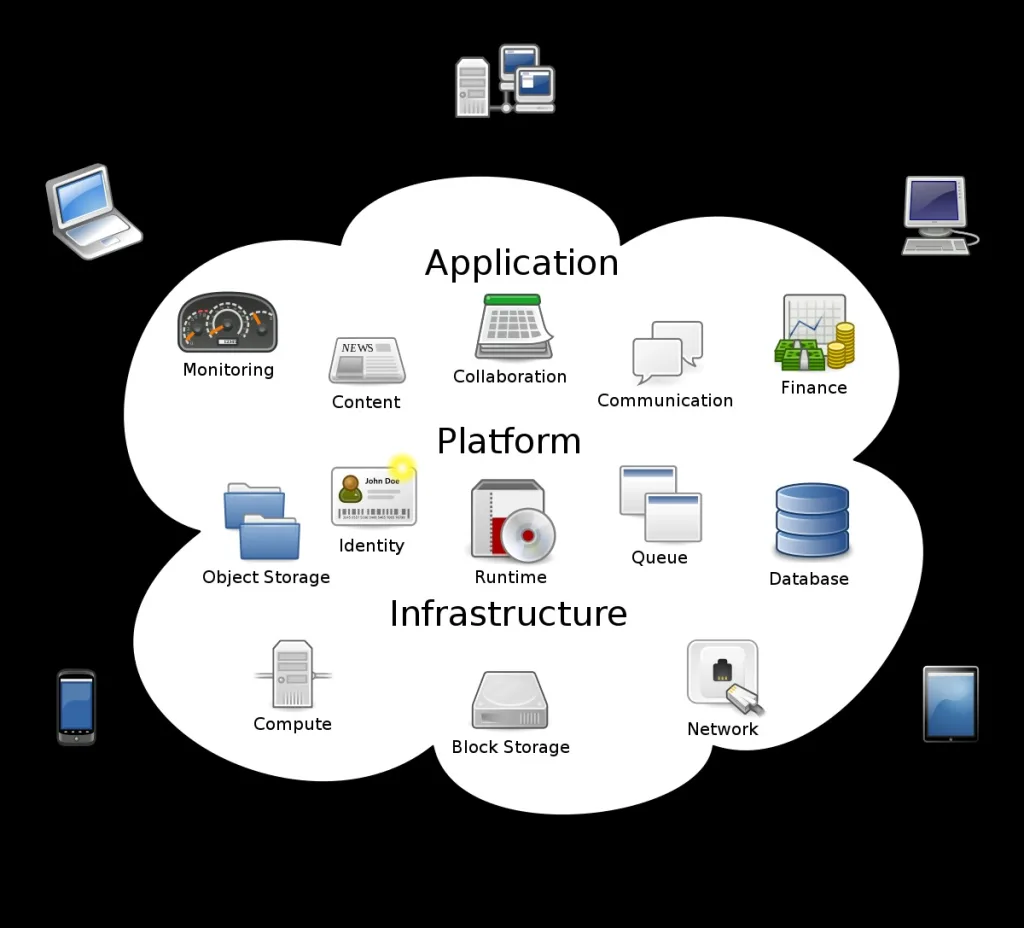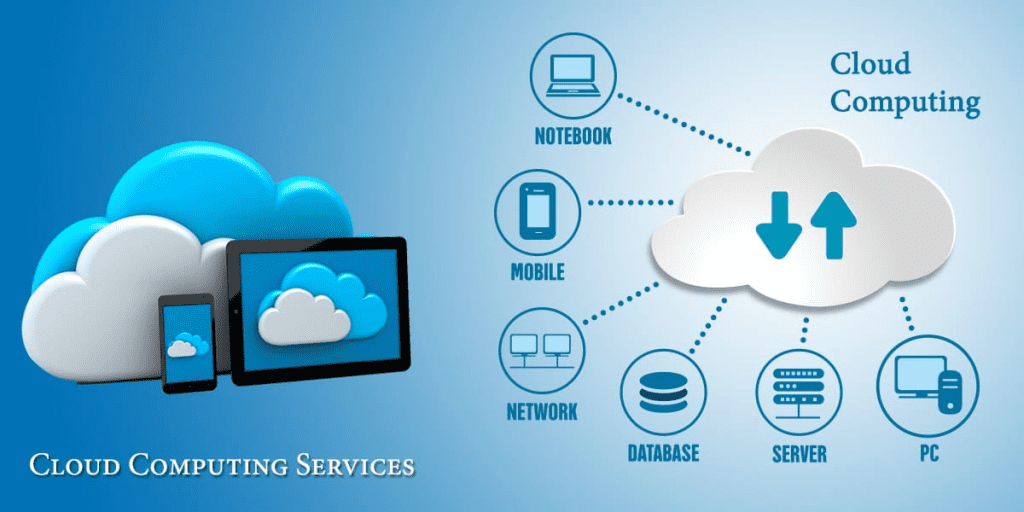Cloud computing is a term that encompasses a wide range of technologies and services that enable users to access computing resources over the internet, rather than relying on physical hardware or software installed on their own devices. Cloud computing has many benefits, such as scalability, reliability, cost-efficiency, and innovation. However, it also poses some challenges, such as security, privacy, and compliance. In this article, we will explore the basics of cloud computing, including its definition, characteristics, models, and platforms.
Table of Contents
What is Cloud Computing?
According to the National Institute of Standards and Technology (NIST), cloud computing is “a model for enabling ubiquitous, convenient, on-demand network access to a shared pool of configurable computing resources (e.g., networks, servers, storage, applications, and services) that can be rapidly provisioned and released with minimal management effort or service provider interaction.

In simpler terms, cloud computing means using the internet to access computing resources that are hosted and managed by a third-party provider, such as Microsoft, Amazon, Google, or IBM. These resources can include anything from storage space and processing power, to software applications and databases, to artificial intelligence and machine learning capabilities.
What are the Characteristics of Cloud Computing?
NIST identifies five essential characteristics of cloud computing:
- On-demand self-service: Users can provision and release cloud resources as needed, without requiring human intervention from the provider.
- Broad network access: Cloud resources are available over the internet, and can be accessed by various devices, such as laptops, smartphones, tablets, and sensors.
- Resource pooling: The provider’s computing resources are shared among multiple users, who do not have control or knowledge over the exact location of the resources, but can specify some general parameters, such as region or availability zone.
- Rapid elasticity: Cloud resources can be scaled up or down quickly and automatically, depending on the demand of the users.
- Measured service: Cloud resources are monitored and measured by the provider, and users are charged only for the resources they use, based on a pay-as-you-go model.
What are the Models of Cloud Computing?
Cloud computing can be delivered in different ways, depending on the level of control and responsibility that the user and the provider have over the cloud resources. NIST defines three main models of cloud computing:
- Infrastructure as a Service (IaaS): The provider offers the basic infrastructure components, such as servers, storage, networks, and virtualization, and the user can deploy and run any software, including operating systems and applications, on top of them. The user has control over the software, but not over the underlying infrastructure. Examples of IaaS providers are Microsoft Azure, Amazon Web Services, and Google Cloud Platform.
- Platform as a Service (PaaS): The provider offers a platform that includes the infrastructure components, as well as some middleware, such as databases, web servers, development tools, and programming languages, and the user can develop and run their own applications using the platform. The user has control over the applications, but not over the underlying infrastructure or middleware. Examples of PaaS providers are Microsoft Azure App Service, Amazon Elastic Beanstalk, and Google App Engine.
- Software as a Service (SaaS): The provider offers a complete software application that runs on the cloud, and the user can access it through a web browser or a mobile app. The user has no control over the underlying infrastructure, middleware, or application, but can configure some settings and preferences. Examples of SaaS providers are Microsoft Office 365, Google Workspace, and Salesforce.
There is also another model of cloud computing that has emerged in recent years, called Function as a Service (FaaS), which is a subset of PaaS. FaaS allows users to write and execute small pieces of code, called functions, that are triggered by events, such as HTTP requests, database changes, or messages. FaaS enables users to create serverless applications, which do not require any server management or provisioning, and are billed based on the number and duration of function executions. Examples of FaaS providers are Microsoft Azure Functions, Amazon Lambda, and Google Cloud Functions.
What are the Platforms of Cloud Computing?
Cloud computing can also be deployed in different ways, depending on the location and ownership of the cloud resources. There are four main platforms of cloud computing:

- Public cloud: The provider owns and operates the cloud resources, and offers them to the general public over the internet. Users share the same resources with other users, and benefit from the economies of scale and the variety of services offered by the provider. However, users may have less control and customization over the resources, and may face some security and privacy risks. Examples of public cloud providers are Microsoft Azure, Amazon Web Services, and Google Cloud Platform.
- Private cloud: The user owns and operates the cloud resources, and offers them to a specific group of users, such as an organization or a department, over a private network. Users have more control and customization over the resources, and can ensure higher levels of security and privacy. However, users may have to bear higher costs and complexity of managing and maintaining the resources. Examples of private cloud providers are Microsoft Azure Stack, VMware Cloud Foundation, and OpenStack.
- Hybrid cloud: The user combines the public and private cloud platforms, and uses them for different purposes, such as performance, security, or cost optimization. Users can leverage the best of both worlds, and enjoy the flexibility and interoperability of moving data and applications between the platforms. However, users may have to deal with some challenges, such as compatibility, integration, and governance issues. Examples of hybrid cloud providers are Microsoft Azure Hybrid, Amazon Outposts, and Google Anthos.
- Community cloud: The user shares the cloud resources with a specific group of users who have common interests, goals, or requirements, such as an industry, a community, or a consortium. Users can benefit from the collaboration and cost-sharing of the resources, and can ensure compliance with specific standards or regulations. However, users may have to compromise on some aspects, such as performance, availability, or customization. Examples of community cloud providers are Microsoft Azure Government, Amazon GovCloud, and Google Cloud for Government.
Conclusion
Cloud computing is a powerful and versatile technology that has transformed the way we access and use computing resources. By understanding the basics of cloud computing, such as its definition, characteristics, models, and platforms, we can better navigate the cloud landscape and choose the best solutions for our needs. Cloud computing is not a one-size-fits-all technology, but rather a spectrum of options that can be tailored to different scenarios and objectives. As cloud computing continues to evolve and expand, we can expect to see more innovations and opportunities in this field.
For more information, so please visit the following links:.
1. Cloud Computing Basics (Cloud 101) Course (LearnQuest) | Coursera
2. A beginner’s guide to cloud computing basics | TechTarget

